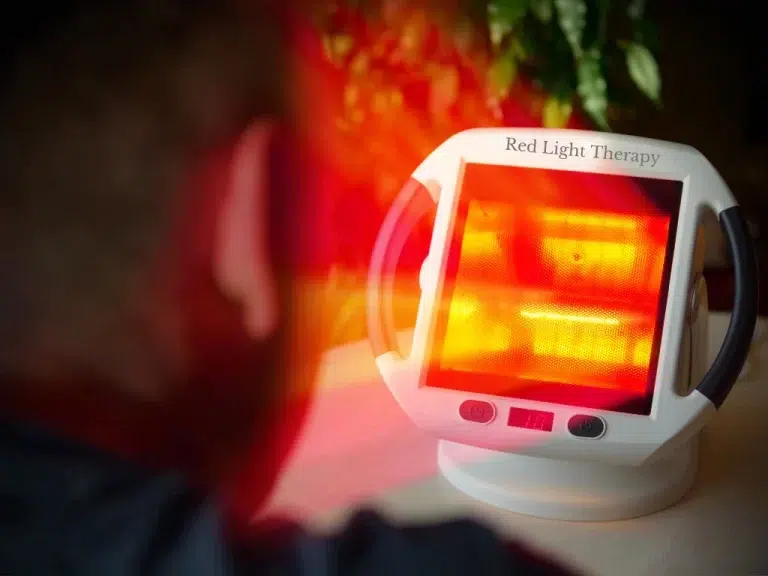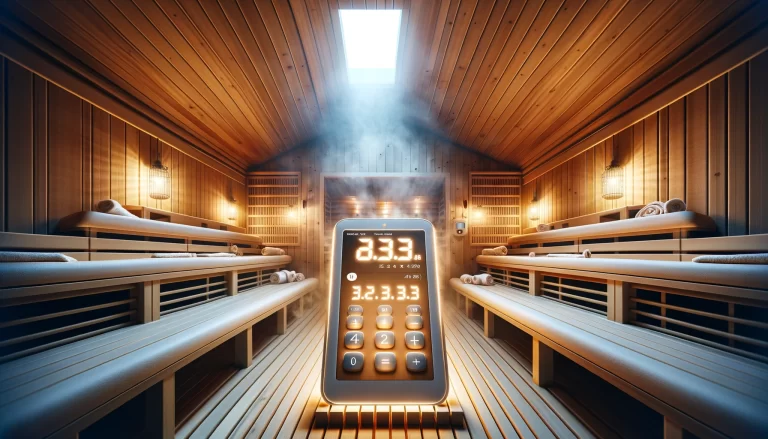Sauna Benefits and Usage Guidelines
A sauna is a small room or enclosed space intentionally heated to high temperatures. The goal is to induce sweating and provide a range of potential health benefits.
Health Benefits of Saunas
- Cardiovascular Health
- Improved Circulation: The heat in a sauna causes blood vessels to dilate, increasing blood flow and potentially lowering blood pressure.
- Heart Function: Regular sauna use may improve heart function, similar to the effects of moderate exercise. Studies suggest potential benefits for those with heart failure and after a heart attack.
- Important: More research is needed for conclusive benefits, especially regarding long-term effects on cardiovascular health.
- Pain Reduction
- Muscle Soreness: Increased blood flow may help with muscle recovery after exercise, reducing soreness.
- Arthritis Pain: Heat therapy has been traditionally used for pain relief. Studies suggest saunas may provide temporary relief from pain and stiffness related to conditions like osteoarthritis and rheumatoid arthritis.
- Mental Well-being
- Stress Reduction: The warmth and quiet environment of a sauna can promote relaxation and reduce levels of the stress hormone cortisol.
- Improved Mood: Saunas may increase the production of endorphins, leading to a feeling of well-being. Some studies suggest potential benefits for individuals with mild depression.
- Detoxification
- Sweating: The primary way the body eliminates some toxins is through sweat. Saunas induce heavy sweating.
- Caution: While sweating can help remove certain substances, claims of saunas leading to significant detoxification of heavy metals or other major toxins are often exaggerated.
- Other Potential Benefits
- Skin Health: Increased circulation and sweating may improve skin tone and texture. Some suggest saunas could be helpful for conditions like psoriasis.
- Respiratory Benefits: Limited evidence suggests potential for temporary relief for individuals with asthma or chronic bronchitis.

Sauna Usage Guidelines
- Recommended Temperature
- Traditional Saunas: Usually range from 150°F to 195°F (65°C to 90°C). Start at the lower end of the range if you’re new to saunas.
- Infrared Saunas: Typically range from 120°F to 140°F (49°C to 60°C).
- Session Length
- Beginners: Start with short sessions of 5-10 minutes and gradually increase as you get comfortable.
- Experienced Users: Most people find 15-20 minute sessions beneficial.
- Important: Always listen to your body! Exit the sauna if you feel dizzy, lightheaded, or unwell.
- Frequency
- Start with 1-2 sauna sessions per week.
- As you adapt, you can increase the frequency to 3-4 times a week, or potentially even daily for short sessions if well-tolerated.
- Hydration
- Before: Drink 1-2 glasses of water before entering the sauna to prevent dehydration.
- During: It’s okay to have small sips of water during your sauna session if needed.
- After: Replenish your fluids by drinking plenty of water following your sauna.
- Best Practices
- Cooling Down: After your session, take a cool shower or rest in a room temperature area to allow your body to gradually return to baseline.
- What to Wear: Wear loose, comfortable clothing or simply a towel. Avoid wearing jewelry or anything restrictive.
- Stay Seated or Reclined: Don’t stand in a sauna, as this can increase the risk of dizziness or fainting.
- Supervise Children: Children should only use saunas under close adult supervision and for shorter durations.
Additional Considerations:
- Avoid alcohol before or during sauna use.
- Don’t eat a large meal right before your sauna session.
- If you feel unwell at any point, leave the sauna immediately.
[wps_alert type=”announce”]Reminder: It’s important to consult your doctor before starting sauna use, especially if you have any health conditions.[/wps_alert]

Traditional vs. Infrared Saunas:
- Traditional Saunas: These use dry heat, typically generated by heating rocks or other heating elements. Temperatures usually range from 150°F to 195°F (65°C to 90°C).
- Infrared Saunas: These utilize infrared light to directly heat your body rather than the surrounding air. Temperatures are generally lower than traditional saunas, often around 120°F to 140°F (49°C to 60°C).
| Feature | Traditional Sauna | Infrared Sauna |
|---|---|---|
| Mechanism | Heats the air of the sauna to high temperatures (150-180°F / 65-82°C) | Uses infrared light to directly heat the body at lower temperatures (115-140°F / 46-60°C) |
| Sweat Production | Sweat glands activated by the heated air | Infrared heat penetrates deeper, potentially inducing more intense sweating |
| Benefits | * Relaxation * Stress reduction * Improved circulation * Potential cardiovascular benefits * May ease muscle soreness * Temporary pain relief * Potential for improved skin | * Detoxification (more research needed, but promising) * Deeper muscle and tissue penetration * May aid in chronic pain conditions * Potential for weight loss support * May improve skin conditions |
| Use | * Shorter sessions recommended (15-20 minutes) * Water poured over hot rocks to create humidity (steam sauna) | * Longer sessions possible(30-45 minutes) due to lower temperatures * Dry heat environment |
| Cost | * Generally more expensive to build and install * Higher operating costs due to energy usage | * More affordable to purchase * Lower operating costs |
| Other Factors | * Social aspect (larger saunas common) * Requires more space * May not be suitable for those sensitive to high heat | * Can be used in smaller spaces * Easier to install, sometimes portable * Better tolerated by those sensitive to heat * Potential concern over EMF (electromagnetic field) exposure – choose low-EMF models |
[wps_alert type=”primary”]Note: While saunas offer potential benefits, it’s crucial to consult your doctor before using one, especially if you have any existing health conditions.[/wps_alert]
Who Should Be Cautious with Saunas
- Pregnant Women: The potential risks of sauna use during pregnancy are related to overheating. Elevated core body temperature, particularly during the first trimester, has been linked to potential birth defects. Most doctors advise pregnant women to avoid saunas altogether.
- People with Heart Conditions: The rapid changes in blood pressure and heart rate caused by sauna heat may put extra stress on the heart. Anyone with existing heart conditions (heart failure, arrhythmias, unstable angina, recent heart attack, etc.) MUST consult their doctor before using a sauna.
- Medications: Certain medications can affect your body’s ability to regulate temperature or increase your risk of dehydration. Examples include diuretics, beta-blockers, and some antidepressants. Discuss your medications with your doctor to determine if sauna use is safe.
- Children: Young children are more susceptible to heat-related illness. While short sauna sessions under close adult supervision may be okay for older children, it’s always best to consult a pediatrician first. Saunas are generally unsuitable for very young children. for more about Sauna’s Impact.
Other Groups Who Should Exercise Caution:
- Older Adults: May be more prone to dehydration and heat-related illness.
- Individuals with Low Blood Pressure: Saunas can further lower blood pressure.
- People with Uncontrolled Seizures: Heat may be a potential trigger.
- Anyone with Open Wounds or Skin Infections: Saunas are communal spaces where infections could spread.
Finding a Sauna
Types of Facilities
- Gyms: Many gyms and fitness centers offer saunas as part of their amenities. Check with gyms in your area.
- Spas: Saunas are a common feature at day spas and wellness centers. These often offer sauna sessions alongside other treatments like massages.
- Public Saunas: These facilities may be standalone businesses or part of community centers and typically offer access for a fee. Search for “public saunas near me” to find locations.
For more about Which Sauna is Right for Me.
Home Sauna Options
- Cost vs. Convenience: Home saunas offer ultimate convenience but come with a significant upfront cost.
- Types: Traditional saunas, infrared saunas, and even portable sauna options are available. Research which type best suits your needs and budget.
- Space Requirements: Ensure you have a dedicated space that can accommodate the sauna size you choose.
- Installation: Professional installation is often recommended, especially for traditional saunas with electrical requirements.
Additional Considerations
- Addressing Myths
- Weight Loss: While saunas cause water loss through sweating, this is temporary. Saunas are not a substitute for healthy diet and exercise for sustainable weight loss.
- Extreme Detoxification: The body has its own detoxification systems (liver, kidneys). Saunas can support sweating, but extravagant claims of eliminating major toxins are often misleading.
- Cure-All: While saunas offer potential benefits, they are not a magical solution for all health problems.
- Importance of Moderation
- Overuse Risks: Excessive sauna use can lead to dehydration, electrolyte imbalances, and heat-related illness.
- Listen to your body: Take breaks when needed, stay hydrated, and don’t push yourself beyond your comfort zone.
Find More Healing in Style
Relax like never before with our expert tips and top-notch solutions for ultimate relaxation.
Hot Tub Patio Insights
Check out simple tips and creative ideas to build your dream outdoor retreat with Hot Tub Patio.
Learn MoreConclusion
Saunas offer a unique way to relax, potentially improve your health, and enhance overall well-being. Key benefits that research suggests include:
- Improved cardiovascular health
- Reduced pain and muscle soreness
- Enhanced mood and stress relief
- Potential benefits for skin health and certain respiratory conditions
However, remember that saunas are not for everyone. It’s essential to listen to your body. If at any point you feel dizzy, nauseous, or significantly unwell, exit the sauna immediately and cool down.
[wps_alert type=”note”]Important Note: Always highlight the importance of consulting a healthcare professional before using a sauna, especially for individuals with underlying health conditions. Your doctor can provide the best guidance on whether sauna use is safe and beneficial for you.[/wps_alert]














6 Comments